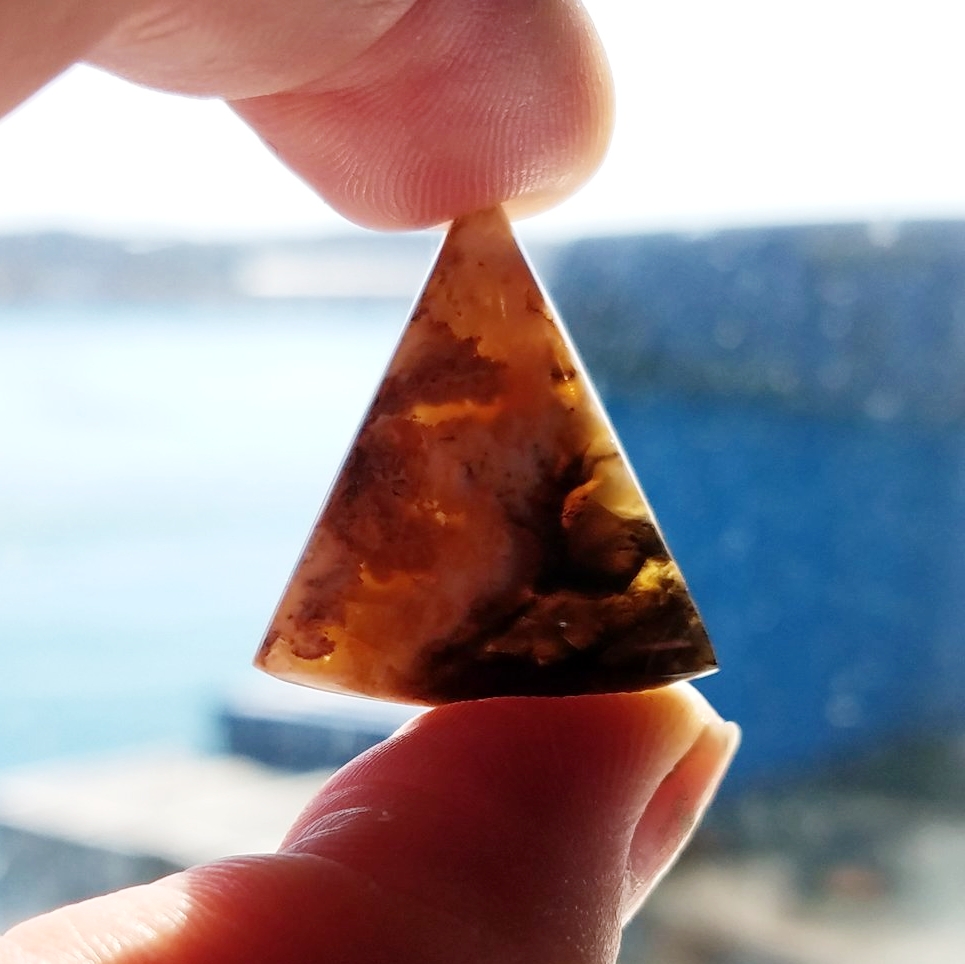Hi.
Welcome to the Ozone and our adventures!

Welcome to the Ozone and our adventures!
SiO2 + Mineral Inclusions

Plume Agate gets its name from the patterns of mineral growths within the silicates. The shapes of these minerals look more like feathers, flowers, or flames rather than trees like Moss or Dendritic Agate. They can be in any color of the rainbow due to the oxidation of the mineral inside and other variables.

This is a piece of 'rough' or uncut, unpolished plume agate material. It's hard to know what you've got until you get inside. A lapidary artist (or one who slabs, cuts, and polishes stones) would attempt to cut this to show off the best of the plume shapes. Just like cutting wood, there are ways to show off the beauty of the grain and ways to make it plain.

Because of the variations throughout specimen of Plume Agate, a crazy variety of designs and colors may reside in one single rock.

This particular batch had plumes of yellow, white, red, pink, black, and Marcasite inclusions. The center piece in the last picture is shown back-lit here.

An interesting perk of working the plume agate is that one may have big, contrasting plumes but also tiny, intricate plumes. Some of the smallest plumes that seem impossibly delicate are my favorites.